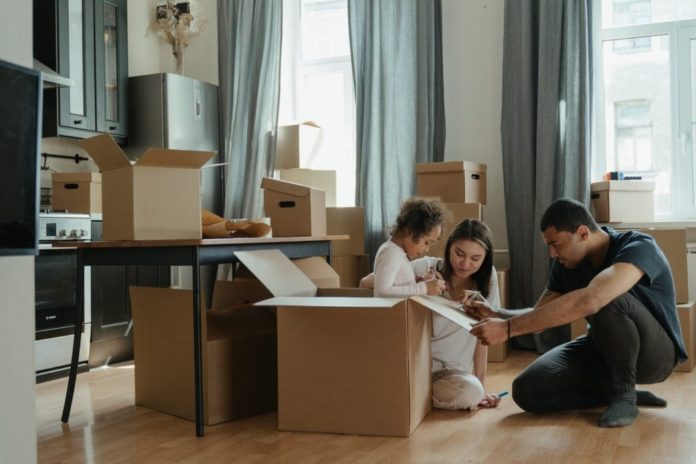Packing for a move can be an exciting and stressful process. When you have to find moving boxes, start packing, and unpack the other end of your journey, it takes time and effort. The good news is that there are some simple steps that you can take to make this process easier on yourself! In this article, I will discuss how to pack with less stress by creating a moving checklist and budgeting for expenses like DE cluttering so you can pack less. You’ll also learn about investing in quality moving boxes as well as what not to do when packing up your belongings, such as over packing a box or forgetting essential items!
Declutter some of your belongings
An important packing tip is making sure you don’t move anything that you no longer need.
This will make it easier for you when packing and if there’s anything left over, then use them as donations.
Clutter can be challenging to manage, so take time to DE clutter before moving day! If this seems too big of a task, try breaking it up into smaller tasks with the help of an app or site-specific to organizing clutter.
The goal should be not taking more than what fits in your car- which means no boxes full of clothes or large furniture items. Be sure everything has been thoroughly thought through because once all packed up and on the truck, those things are going straight out the door regardless.
Create a Moving Checklist
Firstly, create the checklist of stuff that is to be moved. It will be helpful to refer a guide for moving to a new city and make a list of what you are taking and not take so that it is easier for the movers. This process can also help reduce stress because if there’s something on your checklist that isn’t going with you, then it won’t be an issue when packing up. Make sure this list includes everything from clothing, items in the kitchen or bathroom cabinets, pictures, and anything else that needs to be moved.
Once finished creating the moving checklists, start working through them one by one!
Invest in Quality Moving Boxes
Moving boxes are relatively inexpensive; the added durability can also be worth the cost in the end.
Invest in quality boxes. Cheap or thin moving boxes might be tempting, but they are not worth the risk! Splitting seams and damaged corners can confuse what is inside when unpacking – mainly if you use color-coded labels for each room (which I recommend).
Purchasing high-quality moving boxes will also help ensure that your items arrive safely at their destination with minor damage. Ensure all appliances have protective covers and pack them last to get jostled around during transit.
Don’t Overpack a Moving Box
One mistake many people make when moving is trying to fit all of their belongings in fewer boxes by overpacking each box. This will only lead to more work and frustration after the move.
The trick is to put heavy items on the bottom of each box, then place lighter boxes around them, so they don’t slide around inside the box when being carried or moved.
I recommend purchasing sturdy moving containers with lids that seal tight for all your breakables, such as dishes, glasses, etc., and placing these in a separate container at the top of each stack – this way, and you can be sure everything arrives intact!
If you are packing small delicate things (like clothes), roll them up tightly instead of stuffing them inside a large plastic bag – it takes less space and protects what’s inside much better from getting crushed.
Repurpose Household Items for Packing
Try to repurpose things you have — like suitcases, hampers, and laundry bins for storing some of your clothes and household items.
I recommend packing clothing in one of these items and then use it to store more clothes. If you have a large family, this method can save space and time when unpacking at your new home.
If you are moving with pets or kids, be sure to pack pet food, medications, and children’s special needs into the box labeled “Pet Supplies” before loading everything else on top! This will eliminate any confusion later about what is for human consumption or not while trying to unpack.
Label and Take Photos of Furniture
Label and take photos of accessories and furniture parts before packing them away so that, at least initially, they’ll be easy to find.
Take the extra time to protect larger pieces of furniture before you move. Dismantle the furniture put screws and bolts in a bag, and keep that bag taped with the furniture. This will save you time when assembling the larger pieces in your new home.
Invest in quality moving boxes. Preparing items for a move takes much more effort than one might think! Packing smart makes it easier on everyone involved–buy durable boxes from retailers like U-Haul or Home Depot to ensure that your belongings arrive unscathed. Use high recycled content (RCF) corrugated cardboard instead of regular paper ones as this is better for the environment.
Conclusion
There is nothing wrong with a few last-minute packing tips, but it’s important to remember that the most successful moves are planned and executed. By following these useful guidelines for how to pack up an entire household in one day or less, you can make sure your move goes smoothly on moving day. We hope this article has been helpful! The best way to eliminate any confusion about what boxes should go where we arrive at our new home is by taking photos of each item before packing them away. This will help us know exactly which box contains which items, so there’s no need for guesswork during unpacking time! As always, if you have any other questions, feel free to ask someone on our team!
























































